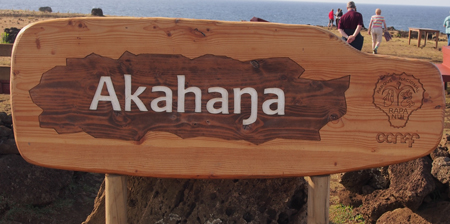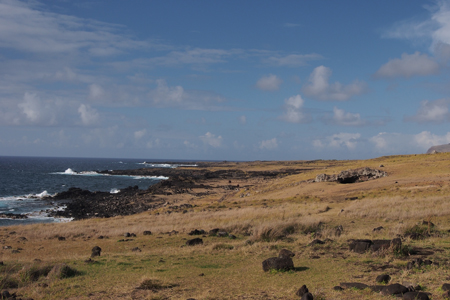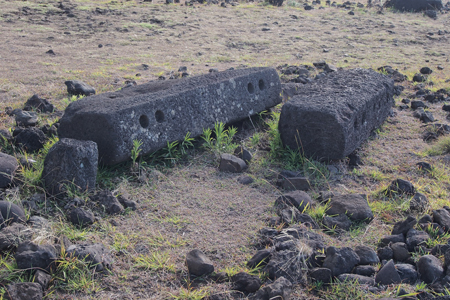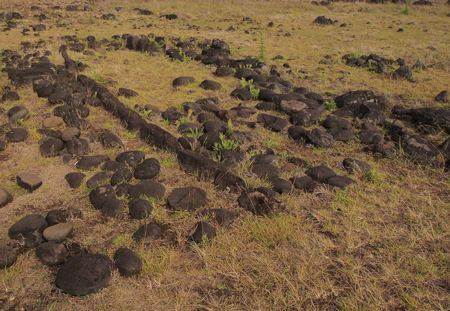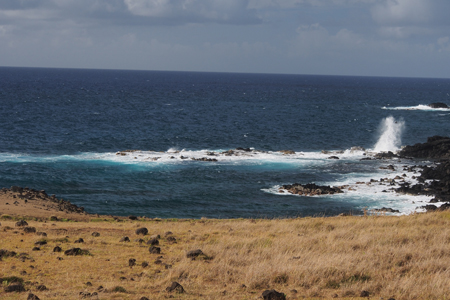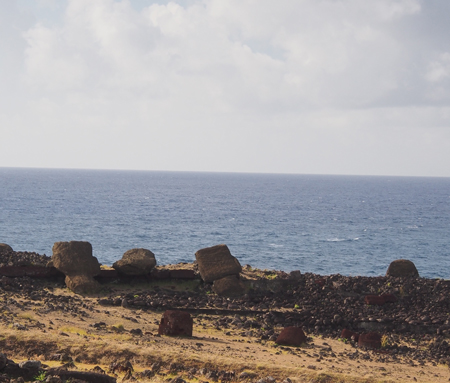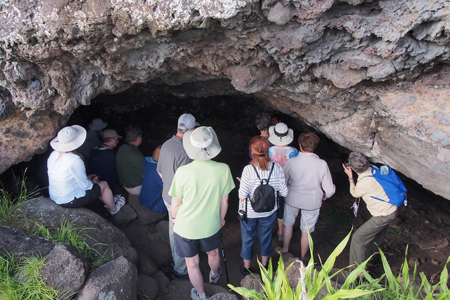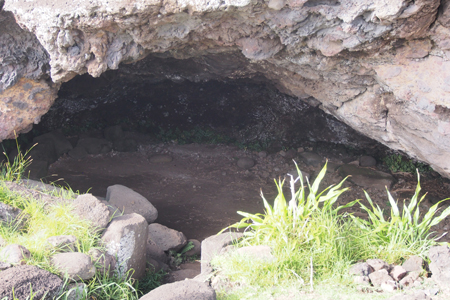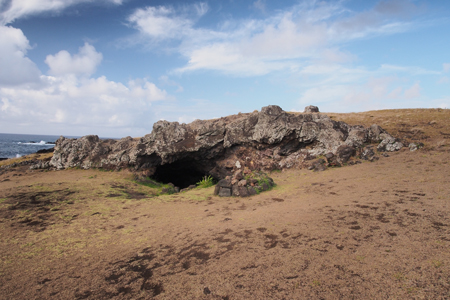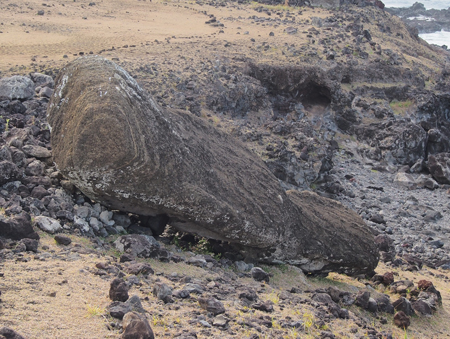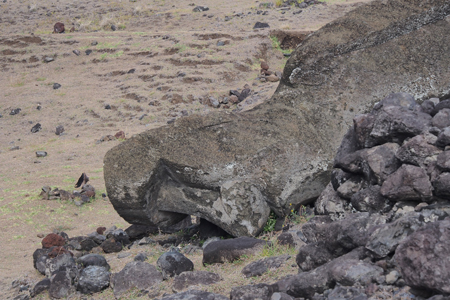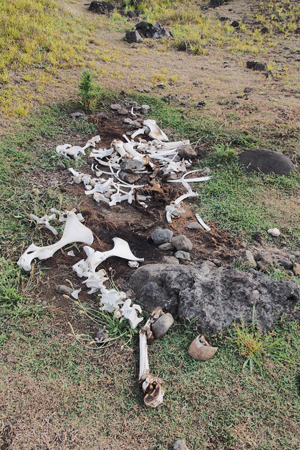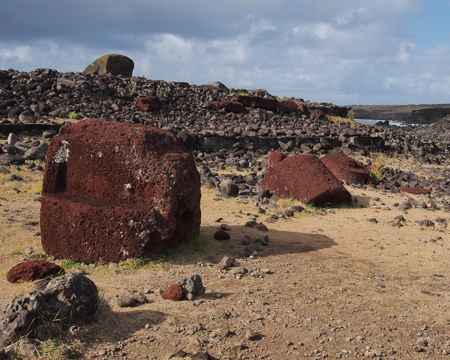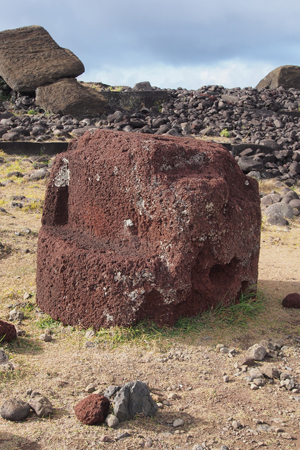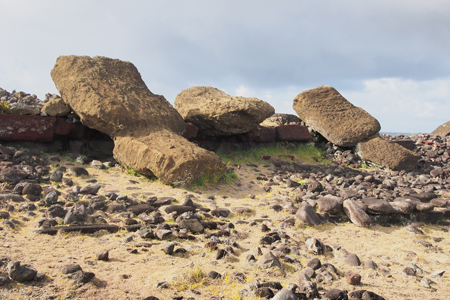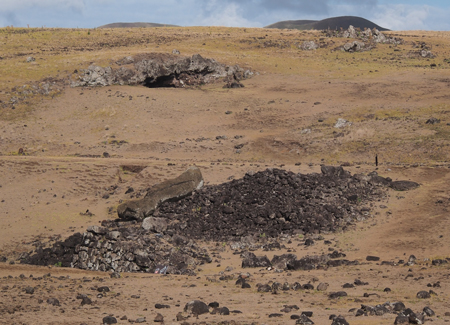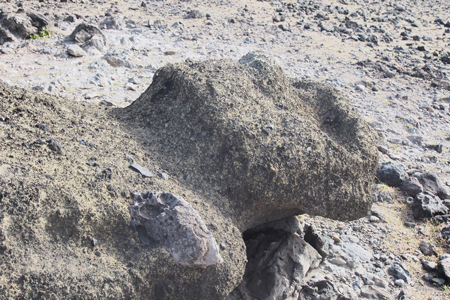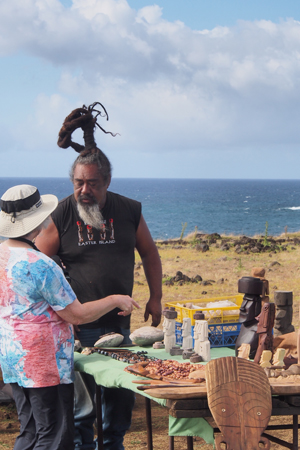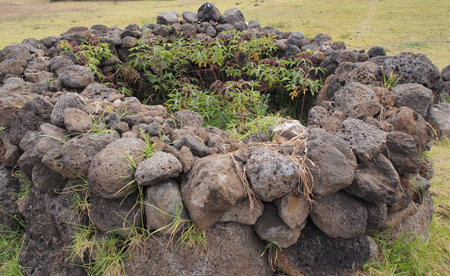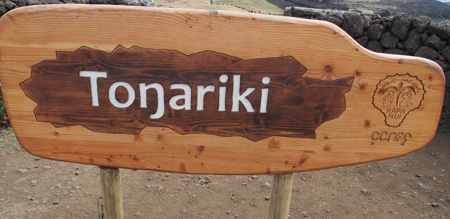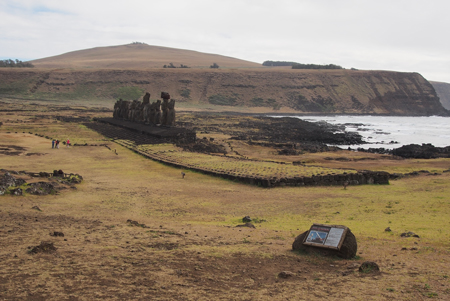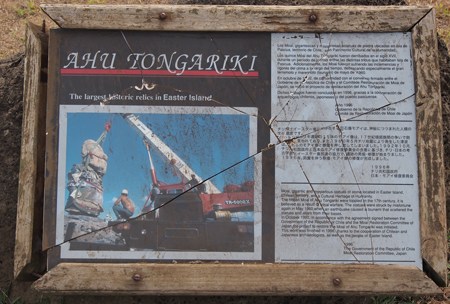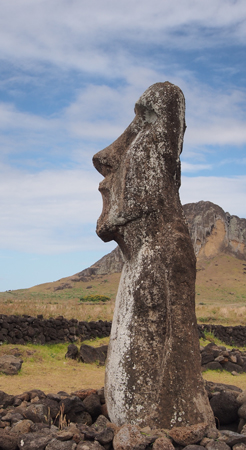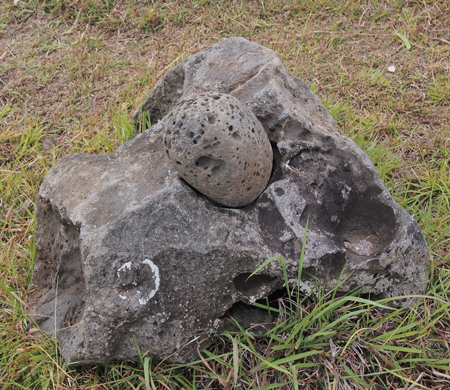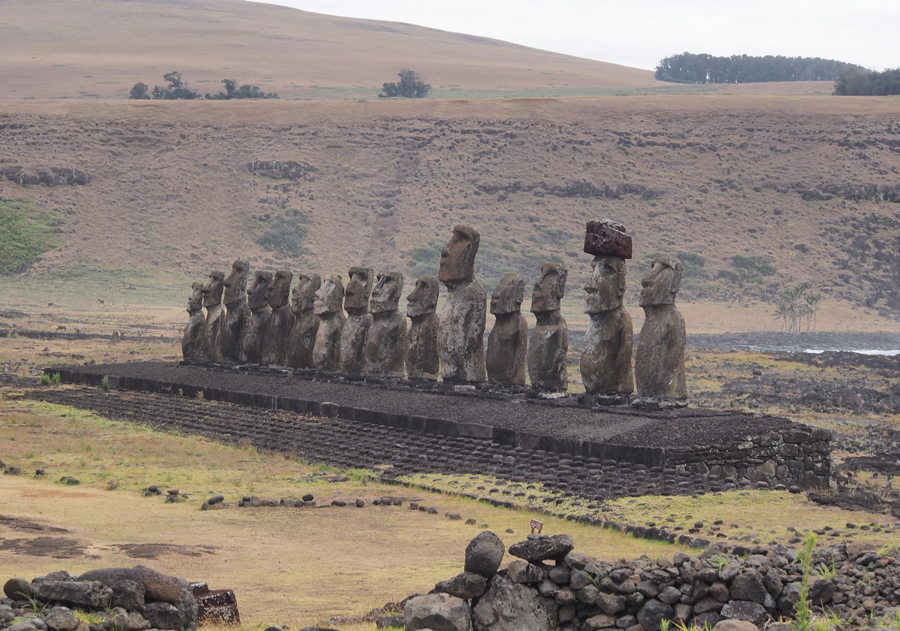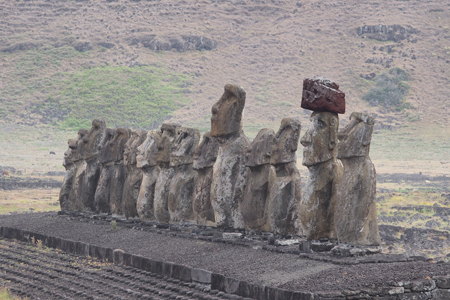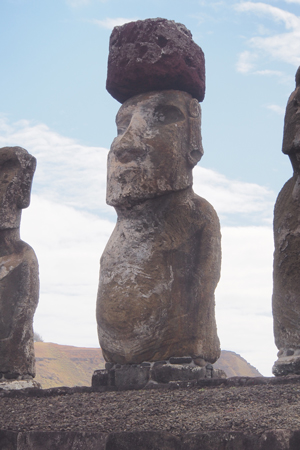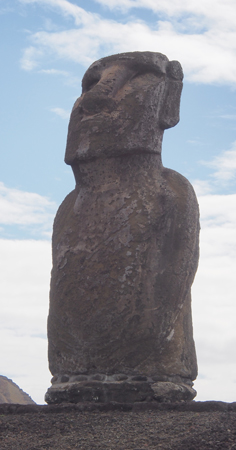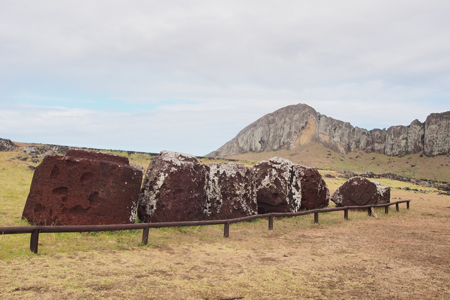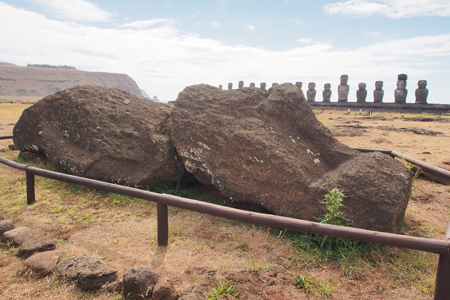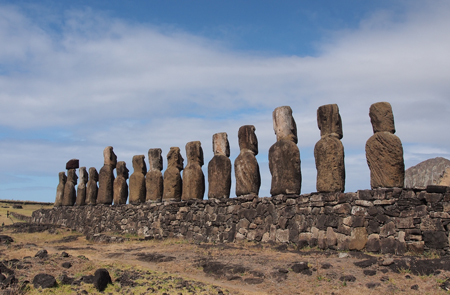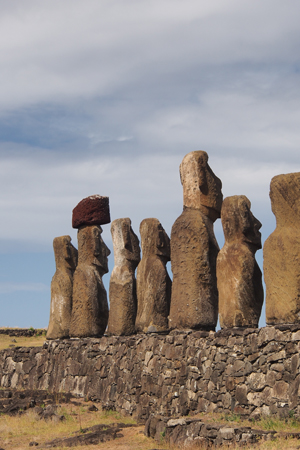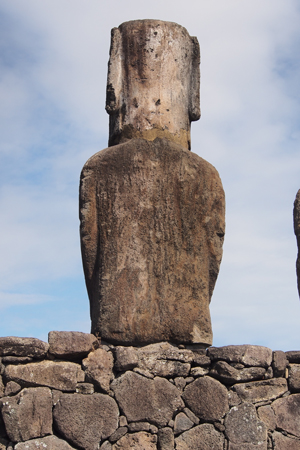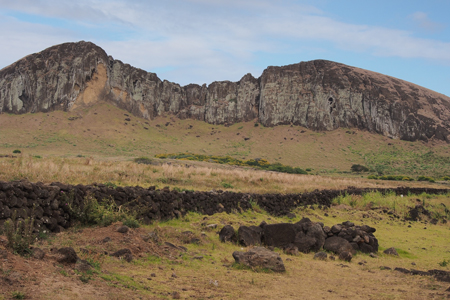Tues., 12/23/14 – Rapa Nui (Easter Island)
Today was a very long but wonderful day. After a buffet breakfast at the lodge looking out at the ocean and the waves breaking on the rocky shore, we boarded our bus to visit Akahana at Vaihu, Ahu Tonariki, Rano Raraku, Te Pito Kura, and Anakena Beach.
The first visit was to Akahana, Polo’s ancestral village. He is three-fourths Rapa Nui. There were the ruins of three ceremonial ahu or platforms. There were foundations of the houses of the nobles. We all went into an inland cave, probably part of a lava tube, and sat to listen to Polo tell stories his grandfather had told him. The caves were for the common people to sleep. Outside was a five stone ring in which a meal would be buried under hot coals to cook.
The moai each represented a respected chief and he was buried in the ahu (the platform) beneath the stone figure. The ahu platform was made of black basalt. The moai statues were carved from brownish volcanic ash and the top notch (the pukao) was made of red scoria.
There are about 887 statues on this island. Only 60 were found to have the top-notch, perhaps it was a later trend to make the statue taller and therefore more important than others. Each statue has a prominent nose, determined jaw, elongated ears, and arms hanging stiffly at their sides with lengthy fingers extending across the abdomen. Their demeanor is austere. Only one statue was found kneeling, the rest are all standing.
Ocean and cave
These illustrate how the various ruins were put back together and made to stand
House foundation
The ocean was beautiful
Fallen moai
Cave
Cave
Cave and cooking ring
Moai facedown
Moai facedown
Someone didn't make it - animal
Pukao or topknot
Pukao or topknot
Fallen moai
Fallen moai and cave
Fallen moai
Vendor at the site
Circles of stones - raised gardens
Circle of stones - raised garden
Next we were taken to the 15 moai at Ahu Tonariki. These are the most visited and publicized moai. They were toppled to the ground when English sailors saw them in the 17th century. Some were knocked down in tribal warfare. Some were set upright but knocked down again by the large Chilean earthquake in 1960 and the ensuing tsunami. The terrace is 400 meters long, the ahu is 200 meters long, and each of the 15 moai has an individual face. Most of the pukao or top-notches could not be supported by the reconstructed moai and so they are missing or still lying on the ground.
It was originally thought that the moai were only heads. After Thor Heyerdahl dug down below one in 1955-56, it was realized that they had bodies with arms at their sides and hands at their bellies. Heyerdahl’s theories, based on oral histories, that there were long-ear nobles and short-ear commoners is no longer accepted nor is his theory that the islanders sailed from South America. DNA tests in 2013 show that the original inhabitants came from Pacific Islands to the west. Heyerdahl also spent time on the island trying to solve the mysteries of how the statues were made and moved and why.
Tonariki
Method of restoring moai to standing position
We were there
A single moai
Metate (grinding stone)
Tonariki
Moai with Pukao
Individual faces
Individual faces
Fallen pukao
1960 tsunami washed this one away from the group
Rear view
Rear view
Rear view
Looking across at the cliff of the Raro Raraku crater
| Return to Top | Return to Itinerary | Return to Trips page to view other trips | Return to Dreamcatcher Home Page |
